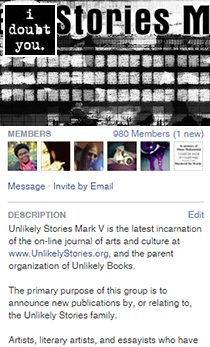On Reading Editor Mattilda Bernstein Sycamore's "Between Certain Death and A Possible Future"
We are in a time of grief. Our lives are now ones of losses, of illness, of violence and fear. In the introduction to the 36 essays presented in Between Certain Death and A Possible Future: Queer Writing on Growing Up with the AIDS Crisis, editor Mattilda Sycamore notes, “Grief is not something you can steal. You can silence it, yes, and I think that’s what our culture has done—dominant culture, gay culture, queer and trans cultures. The grief has been internalized, and the consequences have been devastating—intimately, interpersonally, culturally, and communally” (16). And while all the essays in this volume are on the topic of the effect of AIDS, some make direct mention of Covid. What is striking about each essay and all the essays is their elegance. The bios of the authors show an array of professionalism that gives the work weight as academically viable, while also being readable and engaging.
There is no monoculture in this work, as the authors belong to all parts of our society now regardless of nationality, which speaks to the vastness of the social destruction AIDS had upon us all. For those that doubt this effect, the essay by Kate Doyle Griffiths, “Family Business” discusses AIDS and children :
“The AIDS kids were different from the cancer kids. They didn’t know what to expect. Some of them didn’t know anything at all. Most of them didn’t seem that sick, but some of them looked oddly old, with old skin on young bodies, sometimes suddenly. They all thought they might live.
“They didn’t live. None of them did” (261).
In the oft misperceived and puritanical idea of AIDS as some form of punishment, the realization that AIDS killed kids too firmly contextualizes the now-decades-with-us epidemic as the public health issue it always truly was.
What makes this anthology such necessary reading is its grace in approaching a topic that terrifies too many. Each essay confronts that terror and how individuals confront that mortal fear. In some essays, the terror is private and governs individual behavior; disclosures, testing, medical treatments and current suppressive drugs; yet there is still the survival of memory, of “what it was like to drag a friend’s coffin through the streets, enraged and exasperated” (Conrad, 214). A recent review claimed “the redundancy of experiences […] can make reading the entire book wearying” (Kirkus)—a cold view that ironically echoes through both the AIDS epidemic and the one of Covid now.
C.L. Severson directly mentions Covid in “The Long Ladder of Shame,” at a point so recent and so long ago, when
“[…] and contracting this airborne pathogen in Wuhan. There is a sentiment of dehumanization toward the Chinese for their government […] Sinophobia so thinly veiled it occurs to me that pathogens are used to embolden the fears and bigotry that already exist” (292). Thus, this anthology becomes an illumination of not only what these essays reveal, but what we as readers reveal about ourselves in response.
With these grievous events upon our collective experience, how we respond is how we will go forward. Sycamore’s introduction encourages us to “talk about everything, so we can feel everything. Let’s feel it all, so our future remains possible” (16). Yet, as we can see by reviews to the work, by reviews of Covid death counts, by the number of people we know living with AIDS, by the number of people we, ourselves, lost to AIDS, and are continuing to lose, by the number of people we have lost to Covid and will continual to lose, that it is our own individual emotions that create us as either compassionate or cruel. Sycamore testifies to “memory hovering at the edge of my awareness” (15), and certainly we will not soon forget our individual and collective grief. This anthology is both testimonial and directive of how to live surrounded by death :with compassion, with full emotional presence, with intellectual engagement and with eternal love.

Su Zi is a 2023 Zoeglossia Fellow. She has been writing life-long, with publications in poetry, fiction, essay and interview/essay form, both in literary periodicals and special interest publications for equestrian life. She's a maker of art in a variety of forms, including painting, printmaking, artistbooks, and pottery, and publisher of an artist-made, eco-feminist, chapbook series called Red Mare. Her latest book is from Hysterical Books.


